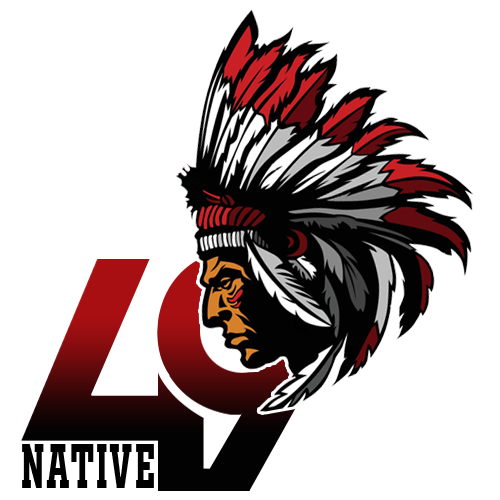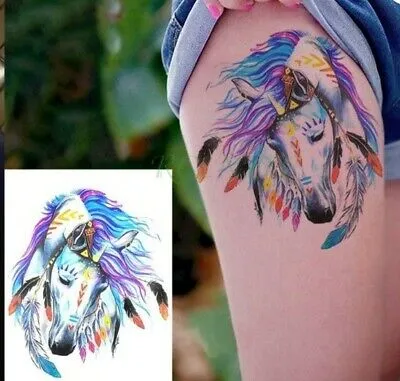The ancient Native American tribes of the vast American Plains are renowned for their profound connection to nature, spirituality, and a warrior ethos. In their culture, the horse is not merely a mode of transportation but a symbol of power, nobility, and survival.
Native Americans considered adorning a horse for battle or buffalo hunting a sacred act that bestowed spiritual and physical strength upon both rider and steed. In this exploration of Native American War Horse Tattoos, 49native delve into the symbolism, significance, and cultural depth of these timeless emblems.
What does horse mean in Native American?
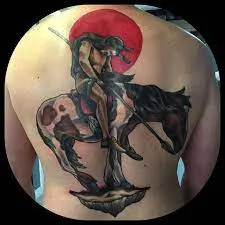
The intricate tapestry of Native American culture is woven with spiritual threads, and one of the most revered animals in their traditions is the horse. For Plains tribes, the horse was not just a means of transportation; it was a spiritual companion, a bridge to the supernatural realm. In this exploration, we delve into the profound spiritual connection between Native peoples and the Horse Nation.
These magnificent creatures symbolized beauty, energy, and healing power, and their images adorned ceremonial objects that represented a profound spiritual connection. Even in contemporary times, horse visions continue to influence the spiritual quests of traditional believers, who seek knowledge and strength through fasting.
Although these visions are intensely personal experiences, some are shared with the wider community through the mediums of song, performance, and art. Join us on a journey through this sacred bond that endures through generations.
What does war paint on horses mean?
In the rich tapestry of Native American cultures, the horse held a place of immense significance. It was more than just a means of transportation; it embodied power, wealth, and the essence of survival.
Painting a horse for battle or a buffalo hunt was a sacred ritual, an act that was believed to bestow both horse and rider with heightened spiritual and physical strength. Such endeavors were not mere artistic expressions; they held the gravity of life and death.
While the symbolism of war horse painting varied among different native cultures, there were underlying themes that united them. The common thread was the profound connection with nature, the earth, and all its creatures. It was believed that nature infused the paints and symbols with a potent energy, empowering both horse and rider.
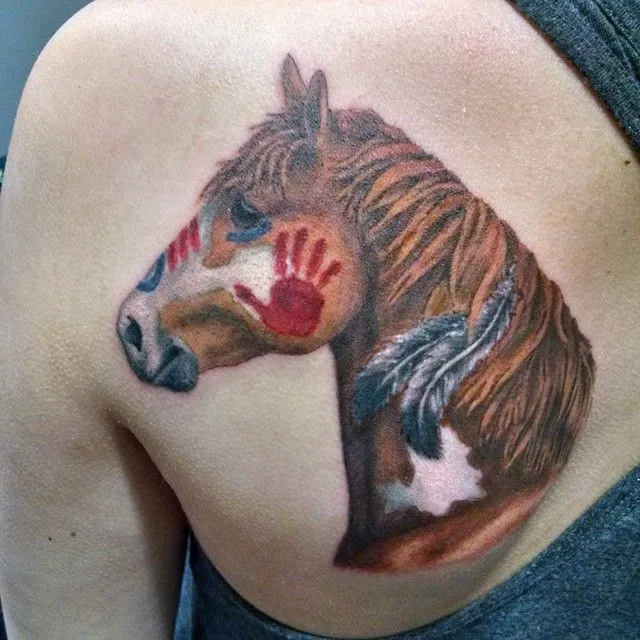
The selection of symbols was often drawn from the natural world, each carrying its unique significance. A handprint symbolized vengeance against an enemy or marked success in hand combat. Zigzag patterns represented thunder, signifying speed and stealth, or sometimes symbolized harmony with the war spirits in the sky, portending victory for the Native warriors on the ground.
Hail markings foretold the defeat and misfortune of the enemy. Circles painted around a horse’s eye or nostril heightened its senses for battle. Painted hooves symbolized successful raids or sometimes indicated the number of horses stolen. A cross on the horse’s body signified the rider’s escape from an ambush, while colorful slashes across a horse’s face proclaimed the victorious defeat of an enemy village.
These intricate designs weren’t just ornamental; they were a testament to the spiritual connection between the Native peoples, their horses, and the world around them. Join us on a journey through the sacred art of Native American war horse painting, where each stroke of paint held the promise of strength and the legacy of a culture deeply rooted in nature’s embrace.
Is horse tattoo good or bad?
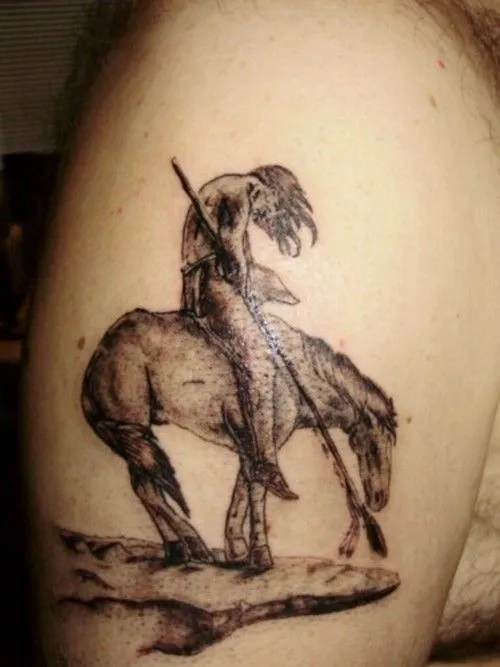
Horse tattoos are more than just ink on skin; they are a profound statement, a symbol of profound meaning, and a testament to the deep connection between humans and these magnificent creatures.
While they certainly express an individual’s affection for horses and the unshakable bond shared between rider and steed, the symbolism that accompanies these equine designs is nothing short of captivating.
Horses, revered in numerous ancient and contemporary cultures worldwide, embody an array of virtues, virtues, and significances. They are not merely animals; they are a reflection of human ideals.
Unveiling the Elegance: Freedom and Nobility
At the heart of the horse tattoo lies the essence of freedom and nobility. Horses are often seen as a representation of the free spirit, gallantly galloping across open landscapes, wind-whipped mane flowing in the breeze. The very sight of these majestic creatures evokes a sense of liberty that resonates with our innermost desires.
The Courageous Steed: Fearlessness and Heroism
Horses have walked alongside humanity in the annals of history, bearing riders into battles and wars. This association with bravery and fearlessness is a core facet of their symbolism. In cultures worldwide, the horse is hailed as a hero, a companion to warriors and knights who rode into the battlefield with unwavering courage.
The Pinnacle of Triumph: Symbol of Success
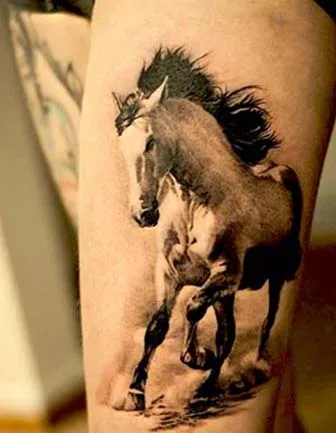
Success is a pursuit that spans the globe, transcending cultural boundaries. Horses, with their powerful strides and unwavering determination, epitomize the spirit of achievement. It’s no wonder that their image often finds its way into various cultures’ expressions of prosperity and accomplishment.
Spiritual Reverberations: Horses in Religion
Religions worldwide have recognized the sacred quality of horses. Whether it’s the Christian tradition where horses symbolize purity or Hinduism where they represent various deities, these noble creatures have firmly entrenched themselves in the tapestry of spiritual beliefs.
A Universal Symbol: Bridging Divides
What’s truly remarkable about horse tattoos is their universality. They traverse religious, cultural, and geographical borders. Christian, Muslim, Buddhist, or Hindu – no matter the faith, you’ll find the presence of horses in their sacred texts and traditions, reinforcing their significance as a bridge between humanity and the divine.
Inked onto the skin, these horse tattoos become more than just body art; they become a canvas for the human spirit to express its deepest aspirations and values. With every stroke of the tattoo artist’s needle, a story unfolds – a story of freedom, bravery, success, and spiritual reverence. It’s a story that speaks to the noblest aspects of the human condition, and it’s a story that has been etched into the very fabric of our shared history.
See more: How To Native American Teepee Tattoo Designs?
What Is Native American War Horse Tattoo?
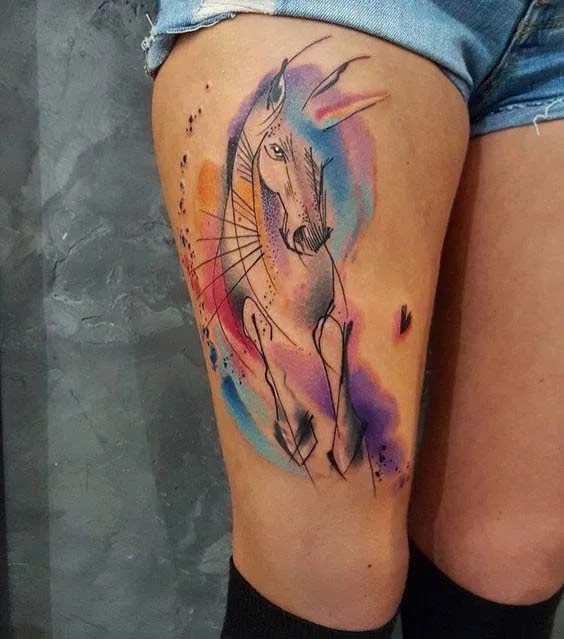
Exploring the Rich Tapestry of Native American Tattoo Culture
The Native American tribes of North America, much like their Polynesian islander counterparts, possess a deep-rooted and captivating tradition of tattoo artistry. In their culture, the act of tattooing transcends mere body adornment; it serves as a profound emblem of accomplishment, social standing, rites of passage, spiritual devotion, and religious homage.
These intricate markings on skin are not just designs; they are narratives etched into the flesh.
Unveiling the Enigmatic Past
Delving into the annals of history, we encounter a rather disheartening reality. The knowledge we possess about Native American tattoos is shrouded in the mists of time, primarily due to the lack of interest displayed by early European scholars and explorers who first made contact with the indigenous tribes.
These encounters were marked by fleeting curiosity rather than a genuine attempt to understand the rich tapestry of Native American culture. Consequently, our insights into their tattoo traditions are confined to a handful of early texts.
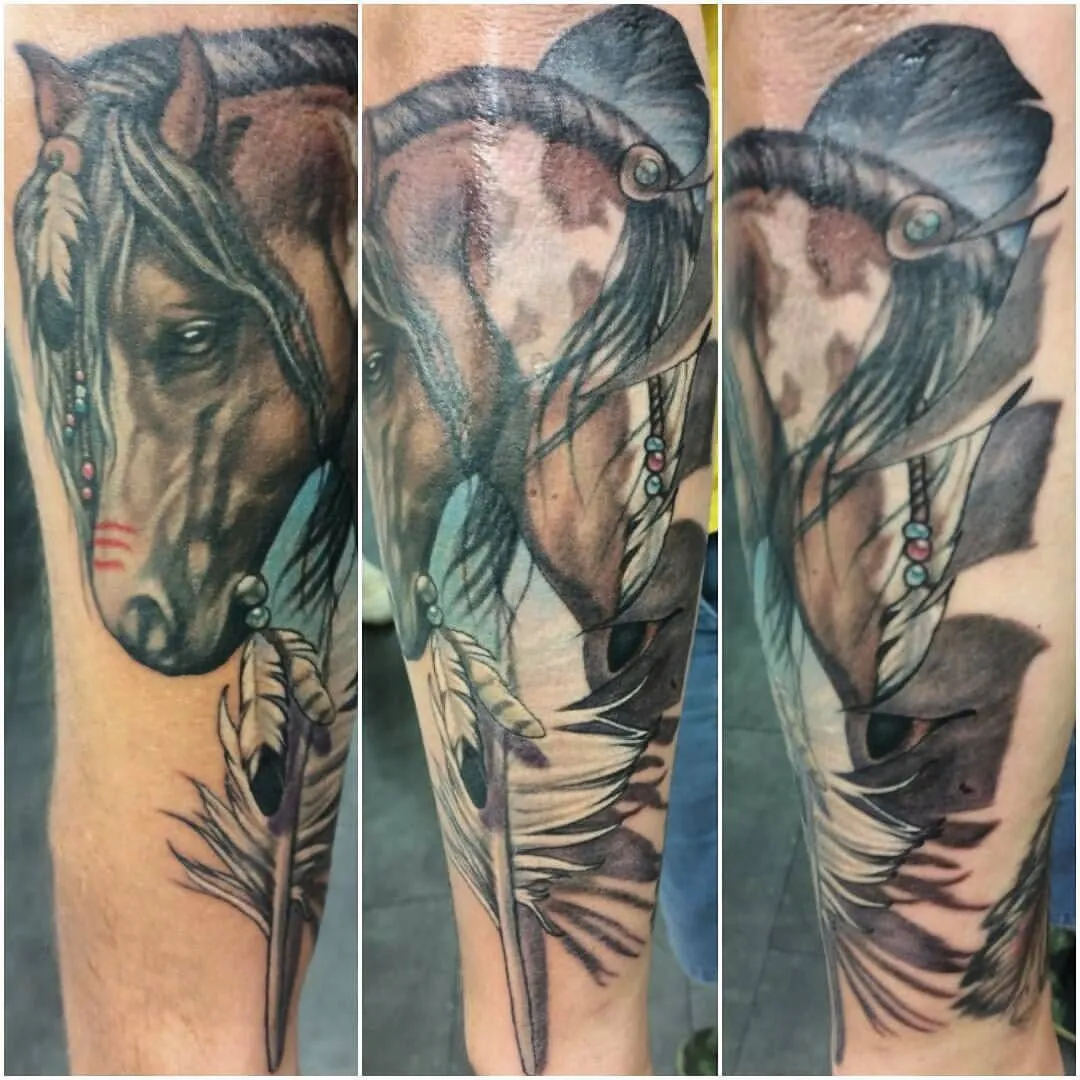
Regrettably, these writings often rely on secondhand accounts and stories collected along the way, rather than authentic firsthand experiences. Nevertheless, these precious fragments offer us a glimpse into a heritage that is as captivating as it is elusive.
Tattoos as Testaments
Native American tattoos are far more than mere ink on skin. They are vivid testaments, each stroke telling a story of courage, achievement, and identity.
These tattoos served as symbols of accomplishment, adorning the bodies of individuals who had surmounted great challenges and demonstrated their mettle. They also represented social standing, a visual language that communicated one’s place within the tribe.
A Rite of Passage
The journey from youth to adulthood is a universal rite of passage. Native American tribes marked this transition with tattoos. These markings served as a testament to a young individual’s readiness to take on the responsibilities of an adult, acknowledging their growth and maturity.
Spiritual Threads Woven in Ink
At the heart of Native American tattooing lies an unbreakable connection to spiritual beliefs. These tattoos were not merely ornamental; they were sacred imprints that paid homage to the tribe’s spiritual practices and beliefs. In many tribes, the process of receiving a tattoo was a spiritual journey, a conduit for the individual to connect with the divine.
A Legacy of Intricate Artistry
While we may grapple with fragmented knowledge, one fact remains indisputable: Native American tattoos are a testament to the exquisite artistry of these ancient cultures. The designs are more than decorations; they are visual narratives that breathe life into their traditions.
In an age where tattooing has evolved into a form of personal expression, we look back at the Native American tribes’ timeless tradition with awe and reverence.
Though much of their tattooing legacy remains veiled in mystery, these vibrant imprints on skin continue to resonate as symbols of resilience, identity, and spiritual devotion. They remind us of the enduring power of ink to tell stories that transcend time and culture.
